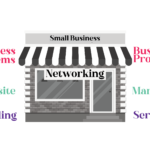Last month I shared tips on boosting local visibility with an emphasis on utilising your local community and audience. This month, I will look at the other end of the spectrum – internationalisation. UK retailers are recognised as a leader in selling overseas. With a great reputation around the world and the English language so widely spoken, UK businesses have an advantage of cross-border selling to reach more customers.
Successful business owners are always looking for ways to grow and expand their business making overseas selling a common consideration. Though not a mission for every business, many owners strive to expand their scope and deliver services to these markets to boost opportunities for marketing and sales.
However, a standard website created for the UK market will not suffice to reach this goal. One of the most important factors to consider when selling internationally, is ensuring your website is fit for your audience, regardless of their geographical location. Small business owners must understand the differences in functionality and services in order to meet the various needs of different cultures.
Language & Localisation
One of the biggest challenges for selling abroad is the language barrier. Therefore, it’s important to focus on language translations first. Consider a Web solution that allows visitors to seamlessly switch from one language to another like 1&1’s eShop. With various languages available, the feature allows customer to easily convert between the relevant countries instilling trust – which is key for overseas conversions.
Consider purchasing website addresses with the relevant domain extensions of countries you are keen to trade in. By setting up dedicated country-specific URLs and by having a domain portfolio, you can re-direct each domain to the main website. This will help ensure an automatic translation to the relevant language. This is a great strategy to reassure your business’s credibility while helping with local visibility and search engine optimisation.
Overseas Payments
The next thing to keep in mind is that currencies differ from country to country. So it’s advisable to ensure your online shop offers multiple payment solutions. Offering options that are internationally recognised, such as WorldPay and PayPal, automatically instills trust into prospective customers.
Multiple Currencies
Offer multiple currencies to cater for a worldwide audience. A customer from the US, for example, may not be comfortable paying in the British Pound. Many eCommerce and website solutions offer packages with various currency conversion tools. By enabling such a feature, customers can choose a payment in their preferred currency.
International Shipping
The final tip for maximising eCommerce opportunities abroad is to offer international shipping options. In order to keep your global customers satisfied and likely to purchase from your website, it’s important to find a local shipping provider that delivers services internationally. For the UK, this includes Royal Mail, DHL, Hermes and Parcelforce. Offering more than one shipping option provides a high level of service and delivers optimal convenience to your customer.
Strong credibility, proven trust and a desire to fulfill the needs of consumers are all characteristics valued by consumers. Taking into consideration all four of these strategies can help best position your business online to an international audience. In the video below, I summarise my top tips for cross-border sales.
https://youtu.be/TeKnpXhjIvA?list=PL8cNtkqY3qKOVut6p0WwclJbkfquuETIL
Web hosting companies, like 1&1, offer products to streamline all of these necessities for a successful, international business online. For more information about 1&1’s products visit www.1and1.co.uk.







